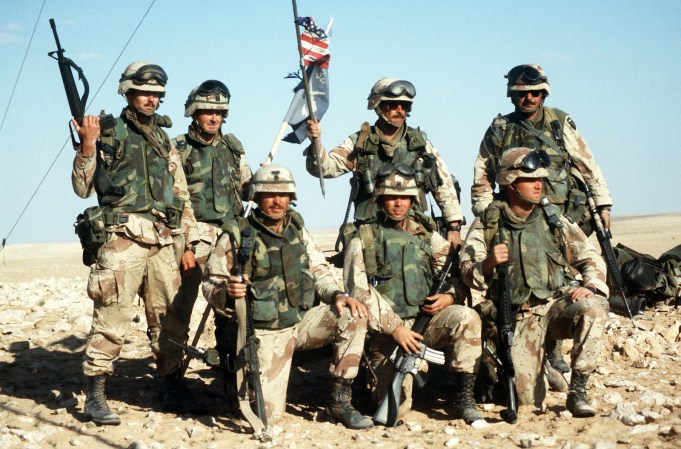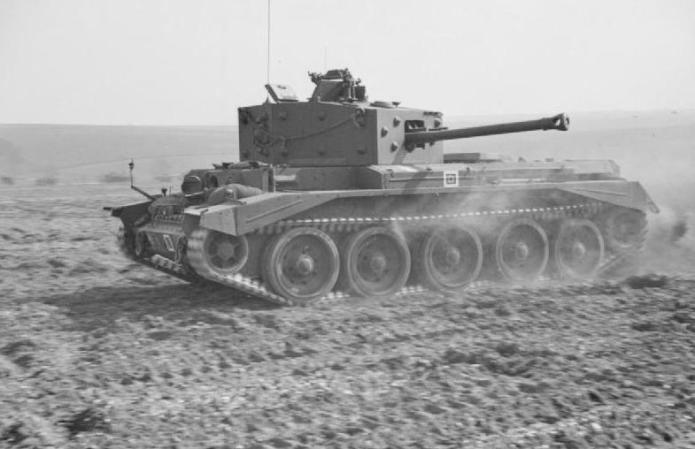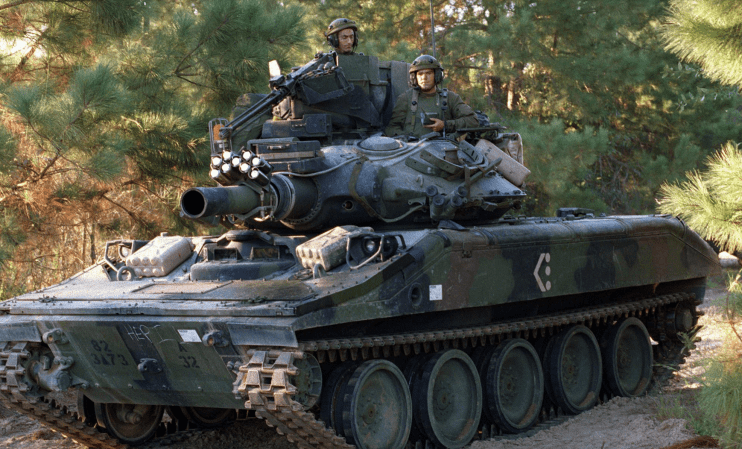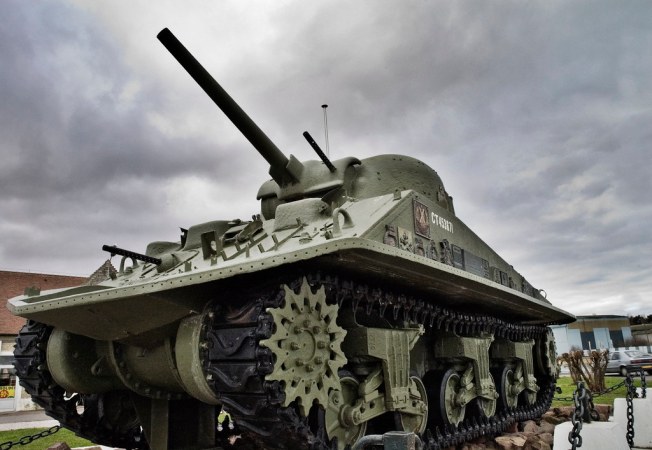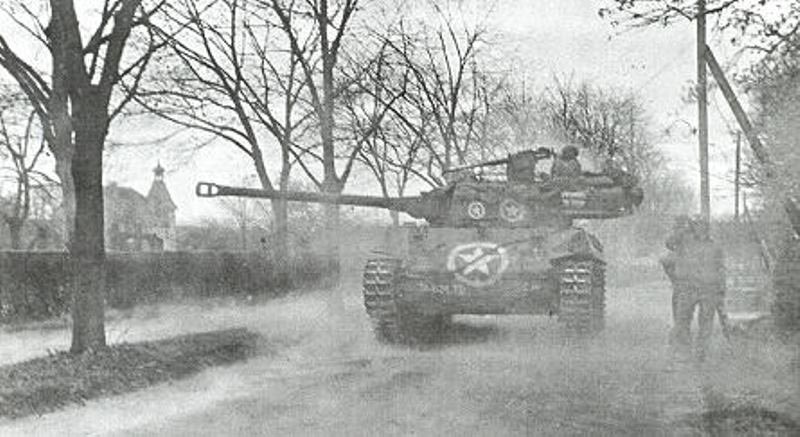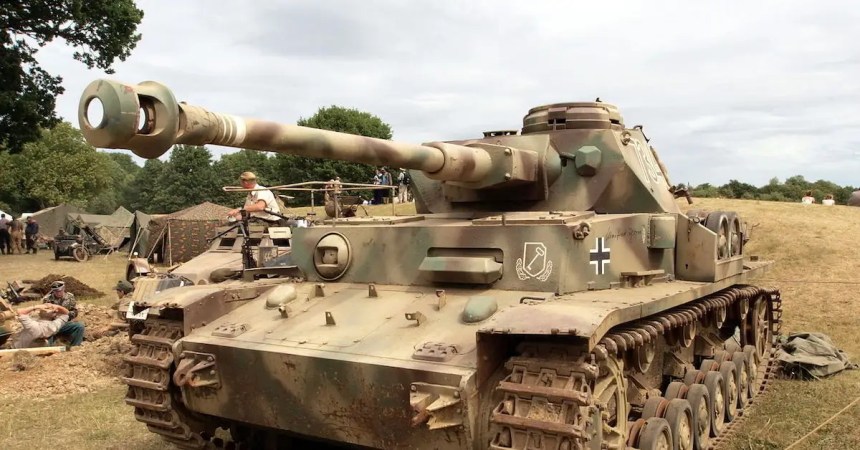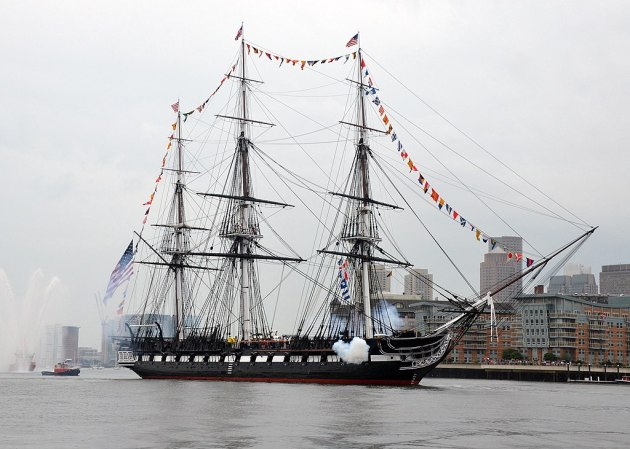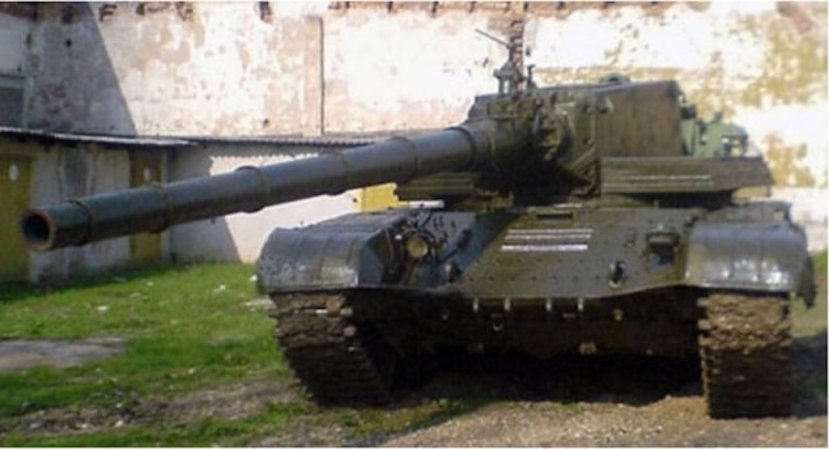Tank warfare has changed a lot from 1914 when rolling fortresses were first proposed to today when Russia’s T-14 Armata currently in development hopes to shoot down enemy rounds before they can even reach the armor.
From the tank’s debut in 1916 to the fielding of ceramic armor on modern tanks, here are nine armored behemoths that changed tank warfare:
1. British Mark I clears the way for tank warfare

The first tank to see combat was the British Mark I, a slow-moving vehicle that provided relatively little protection from infantry and was prone to breakdowns but which ushered in the tank as a weapon of warfare and was able to grab nearly a mile of German-held ground in its first attempt.
2. French Renault FT blazes across the battlefield (at least, in relation to heavy tanks)

The first operational light tank, the Renault FT was one of France’s first tanks and it set the template for tank design that has carried through to the present day.
While the British favored their heavy tank designs, the French adopted light tanks early with the FT. These were faster, capable of matching the speed of marching infantry, and pioneered the cabin design favored by nearly all modern tanks today with a driver in front, commander and turret operator directly behind, and the engine in the rear of the vehicle.
3. Panzer II is a master of coordination (if nothing else)

The Panzer II was one of Germany’s first tanks and a major staple of the army at the start of World War II, but it was a lackluster design that was unremarkable except for one detail: it was the first tank designed with a radio for every tank and an operator assigned as a specific role in the crew.
4. The French S35 featured sloped and cast armor
The S35 was designed and manufactured with a sloped armor hull that was cast in four molds during manufacture. This resulted in armor with fewer seams that could split or give during heavy combat and fewer flat surfaces against which enemy rounds could hit at right angles, reducing the chance they would punch through.
5. The Mk. VII Tetrarch was the first airborne tank

The British Mk. VII Tetrarch tank was a fine light tank that wouldn’t be on this list if it weren’t for a very specific adaptation after it was initially fielded: The Tetrarch was taught to fly.
The first British paratroopers looked for a tank they could take with them on jumps and glider insertions and realized that the Tetrarch was light enough to ride in specialized gliders. British airborne forces took the Tetrarch tanks with them into Normandy on D-Day, but the tanks struggled in combat.
6. The Soviet T-34 had armor that could survive multiple hits from enemy main guns

While there were certainly previous tanks that had survived direct hits from enemy main guns, the T-34 medium tank was possibly the first tank to be fast and well-armed — while also being capable of shrugging off most rounds fired at it.
The Soviets had begun experimenting with sloped armor designs at the same time the French S35 was entering production, and that innovation served the T-34 well. The Germans were forced to rely on artillery and dive bombing to reliably shut the T-34s down until new tank designs with heavier guns could reach the front.
As an added side note, the M4 Sherman was originally going to be on this list as a tank that proved manufacturability (how easy it is to produce mass numbers of the tank) can change the way armored battles are fought. But the T-34 actually predated the Sherman and was manufactured in larger numbers during the war.
7. Tigers could win almost any fight, especially at range

The Tiger was designed at least partially as a direct counter to the T-34, and it became one of the most feared and famed tanks on World War II battlefields. It featured a massive, 88mm main gun that could kill anything on the battlefield while its own armor took hits from 75mm guns from approximately 55 yards and the tank kept fighting.
7. Sheridan was the first operational tank with a functioning barrel-fired anti-tank missile

The M551 Sheridan was a light airborne and amphibious tank that featured a number of attempted innovations, including the barrel-fired anti-tank guided missile.
The Sheridan’s MGM-51 Shillelagh has its issues, though. While it allowed the tank to engage targets at long ranges, it also featured sensitive electronics that could be knocked out of commission by firing the main gun and a problem with the target designating system left it incapable of engaging target in the mid range.
8. Soviet T-62 was the first tank with a smoothbore main gun

The T-62 was designed with the primary goal of countering new NATO designs which featured 105mm rifled bores and armor that could withstand most hits from the same weapon. For the Soviets, this meant that their armored formations would be at a disadvantage.
The tank which would become the T-62 was being developed at the same time as a smoothbore anti-tank gun that allowed for greater penetration of enemy armor by high-explosive, anti-tank rounds that were not spin stabilized. The Soviets replaced the prototype’s weapon with the smoothbore weapon, and nearly all modern tanks now use smoothbores.
9. The M1 Abrams debuts ceramic armor for tanks

While the M1 Abrams was revolutionary in the West for a few reasons, it was the first NATO tank to use a turbine engine and to carry a smoothbore cannon, other tanks in the Warsaw Pact and Sweden had incorporated those elements before the Abrams.
The one thing the Abrams had that was truly revolutionary was its Chobham ceramic armor, a set of sandwiched layers with air pockets and special materials that are still classifed and defeat most enemy tank rounds and missiles.
Notably, the U.S.-made tank’s revolutionary armor did not come from the U.S. It was actually provided by British allies who later fielded the armor on their Challenger tanks.






